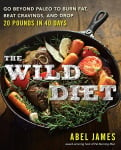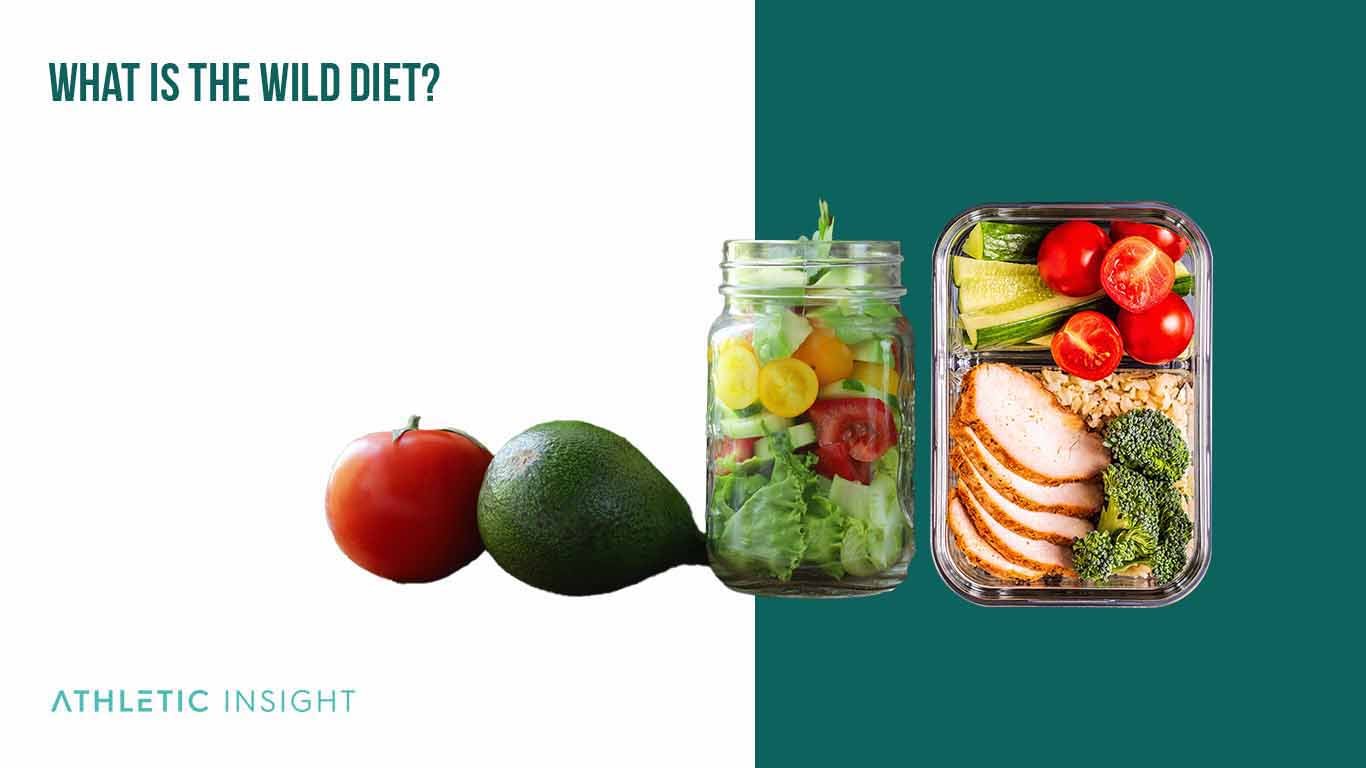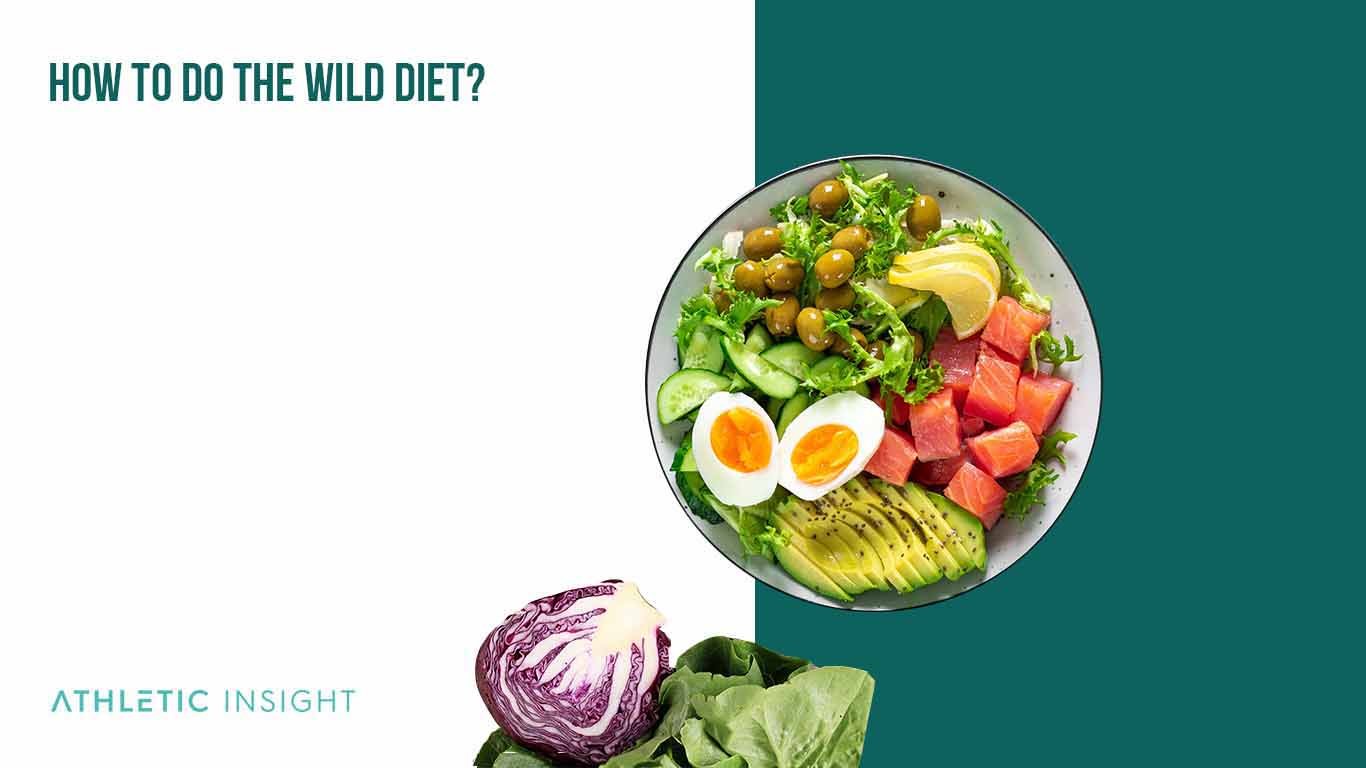The Wild diet is a lifestyle dieting protocol that focuses on wild, natural, and unprocessed foods. This way of eating reduces inflammation in the body, improves digestion and nutrient absorption, and supports overall health.
Wild foods contain a variety of beneficial enzymes, vitamins, and minerals that are lacking in processed and refined foods. Wild foods are rich sources of nutrients such as omega-3 fatty acids, proteins, and antioxidants.

Improved Digestion
Reduces Inflammation
Supports Overall Health
There are a variety of benefits to following the Abel James Wild diet. This diet can help reduce inflammation, improve digestion and nutrient absorption, support the immune system, and increase energy levels. It can also help to promote weight loss and improve mental clarity.
This article will provide an overview of the Wild Diet, its health benefits, and how to incorporate Wild foods into your diet. It will also give a Wild Diet Meal Plan as a starting point. Please keep reading to learn everything you need to know about the Wild diet. By the end of the article, you will have all the information you need to decide if this diet is the right solution for your diet and nutrition needs.
What Is The Wild Diet?
The Wild Diet focuses on eating natural, unprocessed foods rich in nutrients. Wild foods include the following.

- Wild-caught fish.
- Grass-fed meats and dairy.
- Nuts and seeds.
- Wild-grown fruits and vegetables.
Wild foods contain more vitamins, minerals, and antioxidants than processed or refined foods. Wild foods are also naturally low in calories, saturated fat, and sodium. Wild foods also contain healthy fats, fiber, and other beneficial nutrients for good health.
The overall objective of this health diet plan is to remove as many manufactured and processed foods as possible and focus on the natural, nutrient-dense foods humans have eaten throughout history. This diet is also flexible, allowing for the inclusion of organic and sustainable foods.
What Is the History of Wild Diet?
James Abel created the Wild diet in 2016. Abel has a medical background and studied nutrition for many years before making this diet. Traditional diets worldwide inspired him, and he wanted to create a modern-day diet based on natural foods.
Abel believes that Wild Diet is the best way to eat in today’s world. It is healthy and natural while still being delicious and satisfying.
Abel created the diet after he struggled with weight loss. He found that traditional diets often focused primarily on calorie counting and did not address the underlying issues related to weight gain. Additionally, throughout his research, he found it frustrating that many newer diets branded traditional foods like eggs, butter, and red meat as “unhealthy,” even though humans have been eating these foods for millennia.
Abel wanted to create a diet and lifestyle that functioned together. He believes that changing your diet is not enough. It would be best if you supported it with regular exercise, plenty of water, and adequate sleep.
How Does the Wild Diet Work?
The Wild Diet focuses on consuming wild, natural, and unprocessed foods. Wild foods are nutrient-dense and provide a wide variety of health benefits. Wild foods are also low in calories, saturated fat, and sodium.

This diet reduces inflammation, improves digestion and nutrient absorption, and supports overall health. Wild foods contain a variety of beneficial enzymes, vitamins, and minerals that are lacking in processed and refined foods. Wild foods are also rich sources of healthy fats, proteins, and antioxidants.
By removing many of the processed foods and artificial additives from your diet, the Wild diet allows your digestive system to reset. Wild foods are easier to digest and help to support a healthy gut environment.
The Wild Diet also encourages mindful eating and discourages overeating. Wild foods are naturally satisfying, which helps to reduce cravings and overeating.
What Are the Principles and Rules of the Wild Diet?
There are several principles and rules that you need to follow on the Wild Diet.
- Rule 1: Eat Wild Foods as Often as Possible: Wild foods should be the primary focus of your diet. Wild foods include wild-caught fish, grass-fed meats, nuts and seeds, fruits and vegetables, and organic eggs.
- Rule 2: Avoid processed foods and sugars: Processed foods contain artificial ingredients, flavorings, and preservatives. They also have unhealthy fats, sugars, and sodium.
- Rule 3: Eat mindfully: Mindful eating helps to reduce overeating, cravings, and unhealthy snacking. Be aware of portion sizes, chew your food slowly, and enjoy every bite.
- Rule 4: Increase healthy fats and proteins: Healthy fats and proteins are essential for a balanced diet. Wild foods like nuts and seeds, olive oil, avocados, grass-fed meats, and wild fish are excellent sources.
- Rule 5: Avoid grains: Grains are not as nutritionally dense as Wild foods, and they can cause inflammation in the body.
- Rule 6: Exercise regularly: Exercise is vital for overall health and well-being. Aim for 30 minutes of exercise at least three times a week.

Improved Digestion
Reduces Inflammation
Supports Overall Health
What Are the Health Benefits of the Wild Diet?
The health benefits of the Wild diet include weight loss, better digestion, improved mood and increased energy.
- Weight loss: The foods you are allowed to eat in the Wild diet are lower in calories and fat than processed foods, which can help with weight loss. Wild foods also reduce cravings and overeating, making it easier to stay within a calorie budget.
- Digestion: Removing processed food and grains improves digestion and reduces inflammation. Additionally, the foods you eat are packed with enzymes, vitamins, and minerals essential for digestion.
- Mood: The natural foods you eat in the Wild diet are nutritionally dense and can reduce symptoms of depression and anxiety. Wild foods also contain healthy fats that are essential for brain health.
- Energy: Wild foods are an excellent source of natural and sustainable energy, which can help you stay energized throughout the day.
What Are the Health Risks of the Wild Diet?
Despite the benefits, some health risks are associated with the Wild diet such as higher fat content, nutrient deficiencies, lack of fiber, and potential kidney stones.
- High in fat: Wild foods are naturally high in fat, so following this diet can lead to an unhealthy increase in fat consumption.
- Nutrient deficiencies: Since the Wild diet is so restrictive and prevents you from eating certain foods, it may result in nutrient deficiencies if not properly supplemented.
- Lack of fiber: The lack of grains in this diet can cause a lack of fiber, leading to digestive problems.
- Kidney stones: The Wild diet emphasizes animal proteins which, if consumed in large amounts, could increase the risk of kidney stones.
How to Do the Wild Diet?
You can implement the Wild diet in your life by understanding, planning, shopping, cooking, exercising, and tracking.

- Understand: Read up on what foods are allowed in the Wild diet and ensure you understand the principles and rules.
- Planning: Plan out your Wild meals and snacks ahead of time. Focus on whole, Wild foods and create a variety of dishes.
- Shop: Shop Wild and go to your local farmers market or Wild store and fill your cart with natural and unprocessed food.
- Cooking: Begin Wild cooking, experiment with recipes and start preparing your meals.
- Exercise: Engage in exercises like hiking, swimming, or yoga to support your diet.
- Analytics: Keep track of your Wild journey by writing down what you eat and tracking your progress.
While on the Wild diet, you do not have to restrict your calorie consumption. You should follow FDA guidelines and consume between 1800-2500 calories per day, depending on your sex and body type.
The Wild diet is healthy and sustainable. You should follow it for at least a month to start seeing benefits. However, you can stay on this diet for months to years if it suits your lifestyle.
If you decide to follow the wild diet, there are some best practices you should follow.
- Eat Wild foods in their natural form: Wild foods contain the most nutrition when eaten raw and unprocessed.
- Eat Wild at least 80 percent of the time: Wild foods should make up at least 80 percent of your diet.
- Eat regularly: Have small meals and snacks throughout the day to ensure you get enough Wild foods.
- Get creative: Just because you are on a diet doesn’t mean foods can’t be delicious.
- Stay hydrated: Wild foods are naturally low in electrolytes and water, so drink plenty of water throughout the day.

Improved Digestion
Reduces Inflammation
Supports Overall Health
What Are the Foods that You Can Eat While on a Wild Diet?
The Wild Diet Food List includes a wide variety of options.
- Vegetables: carrots, lettuce, broccoli
- Fruit: apples, oranges, bananas
- Animal protein: red meat, poultry, seafood
- Eggs: hard-boiled eggs, fried eggs
- Dairy: milk, sour cream,
All these foods naturally contain the essential nutrients you need to live.
What Are the Foods that You Should Avoid While on a Wild Diet?
While following the Wild diet, you should avoid the following foods.
- Processed foods: chips, store-bought sacks
- Grains: whole grains, bread, pasta
- Processed sugar: candy, granulated sugar
You should avoid these foods because they do not provide the essential nutrients the Wild diet provides and can hinder digestion and fat loss.
Who Should Do the Wild Diet?
The Wild diet is suitable for a healthier and more sustainable lifestyle. It also provides numerous health benefits, like weight loss, improved digestion, and increased energy levels.
This diet is excellent for people looking for a holistic and long-term solution to their dietary needs. The Wild diet has the potential to be a lifestyle change, not just a temporary fix.
This diet is also great for athletes and weight lifters. Wild foods are nutrient-rich and contain essential vitamins, minerals, and antioxidants that can help you perform better. Plus, the emphasis on animal protein allows you to maintain your gains while weightlifting.
People looking for a diet to help them reach their health goals should try Wild. It is also an excellent option for those who want to transition from the standard Western diet.
What Are the Best Recipes for the Wild Diet?
There are a variety of recipes for the Wild Diet that you can make without prior experience cooking.
- Mason jar salad: This salad is perfect for on-the-go meals.
- Unwrapped chicken burritos: You can make your favorite chicken burrito fit the WIld diet by removing the tortilla or substituting a lettuce wrap.
- Chicken and vegetable soup: This soup is a great way to stick to your diet on a cold night.
- Veggies and humus: Fresh vegetables and hummus are a great snack, or double the portion and make it a meal.
- Steak stir-fry: Steak and vegetables make a great Wild meal that will keep you satisfied.
What Is a Sample the Wild Diet Plan?
This Wild Diet Plan will show you what a week’s worth of meals might look like on the Wild diet.
- Day 1
- Breakfast: breakfast frittata with spinach, mushrooms, and sausage
- Lunch: tuna salad and vegetable soup
- Dinner: roasted salmon with grilled veggies and dark chocolate
- Day 2
- Breakfast: vegetable omelet and fresh juice
- Lunch: avocado chicken salad
- Dinner: grilled shrimp with broccoli and spring mix
- Day 3
- Breakfast: scrambled eggs with avocado and berries
- Lunch: tomato soup, salad, and roast beef
- Dinner: steak with sauteed vegetables
- Day 4
- Breakfast: sauteed vegetables, soft-boiled eggs, and sliced fruit
- Lunch: yogurt and fresh fruit, Asian chopped salad
- Dinner: pan-seared tilapia and asparagus
- Day 5
- Breakfast: over easy eggs and yogurt
- Lunch: chicken salad and oranges
- Dinner: Asian stir fry with pork
- Day 6
- Breakfast: tomato frittata and sausage
- Lunch: Greek salad with chicken and feta cheese
- Dinner: teriyaki chicken and coleslaw
- Day 7
- Breakfast: avocado, roasted tomatoes, and eggs
- Lunch: chicken soup with fresh vegetables and yogurt
- Dinner: tomato sauce with roasted chicken and mushrooms.
What Are the Facts About the Wild Diet?
There are some critical facts you should know about the Wild diet.
- Choose healthy options: When deciding what to eat, focus on unprocessed foods. The fresher, the better.
- Focus on protein: Each meal should include protein of some kind. Protein will help you avoid cravings.
- Eat slowly and chew well: Eating slower can help you lose weight.
- Plan ahead: Following this diet can be challenging, so it is crucial to plan your meals to avoid breaking the rules.
- The adjustment period: The first week on this diet can be an adjustment. Be mindful of your body and listen to what it needs. In the long run, the fact that this diet is low in saturated fat and cholesterol will make it worth it. How long does it take to see results from The Wild Diet?
Is the Wild Diet Considered a Healthy Diet?
Yes, the Wild diet is considered healthy. The foods you can eat are packed with nutrients, and you won’t lack any necessary food groups or vitamins.
What Is the Difference Between the Wild Diet Vs. Paleo?
The Wild Diet focuses on eliminating processed foods which means it is more restrictive than the Paleo diet, which only requires that you eat natural, unprocessed foods. The Wild diet also removes grains, legumes, and dairy, while the Paleo diet does not have as many restrictions on these items. Wild emphasizes more plant-based foods, while Paleo emphasizes meats and other animal products.

Improved Digestion
Reduces Inflammation
Supports Overall Health



